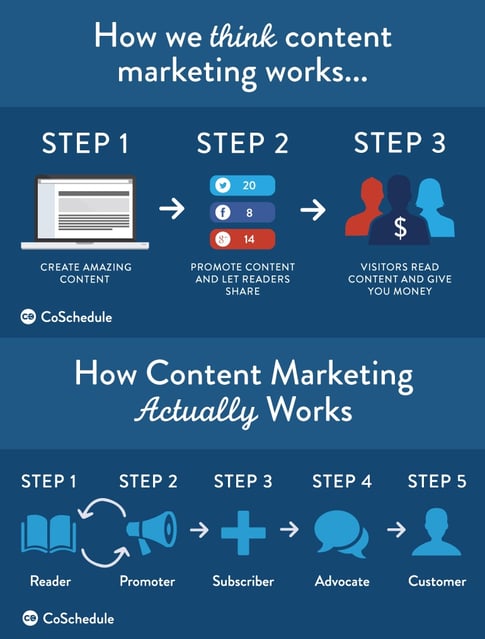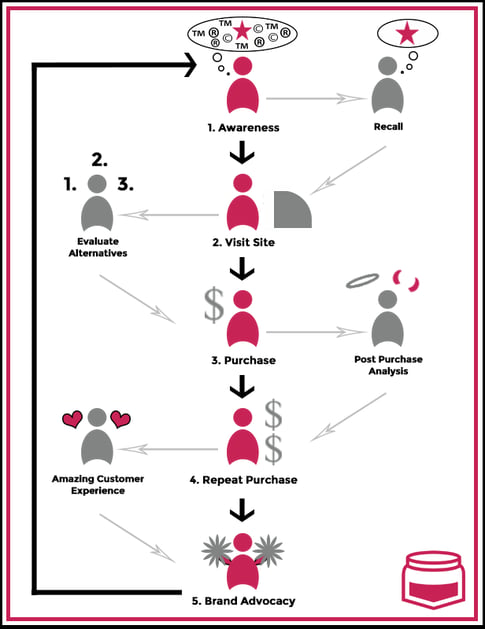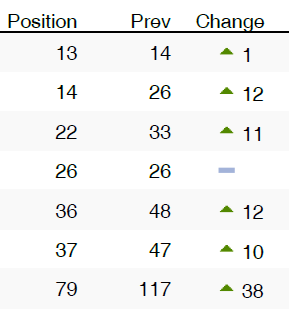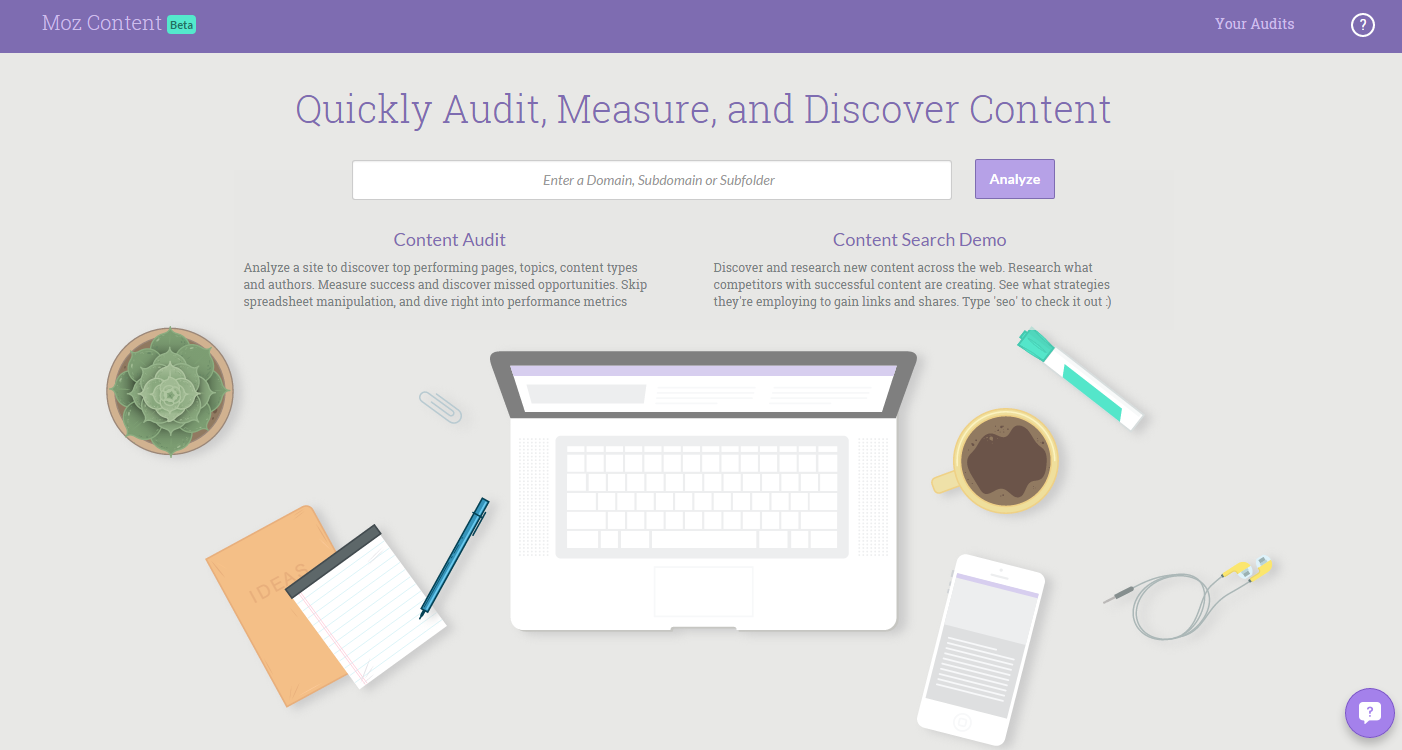Blogs aren’t just for compiling your favorite top ten lists or reviewing products and services—they’re hubs of marketing savvy, designed to educate readers, gain their trust, and turn them into subscribers. It is the most affordable content marketing strategy, which if you aren’t doing for your business online, then you are falling behind your competition.
In other words, blogs are like businesses that help to show that you are experts in your niche, and you want to turn those readers and prospects into subscribers and eventually customers.
Source: Coschedule - How Content Marketing Works
Whether it’s a personal blog or one intended to support your company’s other marketing efforts, a blog succeeds or fails by how much work you put into it. Part of improving any blog should involve tracking what elements are raking in the visitors, and which ones might be falling flat.
We’ve compiled a list of the top five metrics you should be tracking on your blog to determine its level of success—or gauge how badly it needs an overhaul.
1. New vs. returning visitors
Receiving an influx of new visitors is a great thing—it means people are finding your blog and new content. But if they’re not returning, you may have some underlying issues. The goal of any blog should be to increase its number of subscribers. These will be your committed “customers,” the ones who return daily or weekly, depending on how often you update your content.
To bring in returning visitors, make sure your content is original, provides value, is constantly updated, and that visitors can easily subscribe to your blog. Changing the placement of your RSS/email subscription and adding a “subscribe” button above the fold and below the post is a simple way to secure subscribers.
You can also use exit intent to persuade visitors before they go, and slide-ups to convert engaged visitors that are reading your material. Using offers to free resources, whitepapers, as well as discounts or special offers provides instant value to content.
Source: Sweet Tooth - The Complete Customer Journey
2. Referral and organic traffic
If you don’t know where or how your visitors are finding your blog, it’s a good place to start. Track referring links to know where you need to improve efforts or adjust your focus. This is why guest posting - when done correctly - is still an efficient source of referral traffic. You want to contribute to sites where your audience is reading. Not only does it give you authority, but it helps to gain referral traffic for a long time to come as well as the potential to help increase rankings.
If visitors are clicking on your Twitter links, then tweet more. Same goes for Facebook—promote your content more frequently if that’s where you’re getting most of your visitors and engagement.
You also want to track the organic traffic you are getting from search engines. This shows that your content is getting found without you having to pay for ads or contribute on other sites. When you create amazing content that gets shared, linked to, and engaged with, then Google and other search engines tend to rank that content higher as they perceive it to be helpful to the user searching for that information.
3. Tracking keywords
SEO paves the way to success and knowing which keywords or phrases to focus on will help you trend higher in search ranking results. Use keywords in your headlines, subtitles, and content to attract your readers. By using ranking and reporting tools, you can easily track keywords over time and see how they are improving thanks to your blog and content.
The Google AdWords Keyword Planner helps you to come up with relevant and long-tail keyword terms that get searched to use when creating your helpful content. While Google Analytics made most keywords [not provided] in 2013 to help keep user privacy, it still does show what keywords some visitors search for to get to your site. If you connect Google Search Console (formerly Google Webmaster Tools) to your analytics, then you'll get a bit more keyword insight.
4. Comments
Marketing is all about engagement these days. If you want to know how well your blog is doing, just check to see how engaged your reader base is. Are you encouraging them to leave comments or join the discussion? When users leave comments, they are actively engaging you, your content, and your other readers.
It’s helpful to pay attention to how many comments you’re getting and what posts are attracting the most feedback, which brings up a good part of your blog to focus on - feedback.
Are readers able to post comments and opinions? Can they submit feedback about what they like or dislike about your blog?
Allowing your readers to engage in ways that are more direct keeps the blog active and current—and being able to track that feedback is integral to keeping your blog relevant.
5. Top content
Do you know which posts attract the most readers, comments, links and social shares? If not, you should start paying attention to your top rated content. Knowing what to expand on will help you keep your readers interested. Your goal should be to find common threads and utilize those trending topics in future posts to ensure that your content remains relevant and interesting to the users you want to subscribe to your blog.
Tracking page views, clicks, and comments are the simplest ways to identify your top content. Basic click tracking software and heat maps help establish a visual method of identifying what’s hot—and what’s not—on your blog.
You can also use Google Tag Manager to install scripts to see the content that people are reading and getting to the bottom of the page versus the content that isn't getting as many readers to the end.
Moz announced at MozCon that they will be releasing a new tool (that they let us beta test) in Q4 of 2015 that will help make it easier to help audit and analyze your content. The tool will break your content into different types, topics, track social shares, top authors, content length, and much more to come with the official release.
Turning your blog into something more involves diligent observation of what’s working and what needs improvement. The five metrics we went over can serve as a starting point because you won’t know if anything is working if you don’t measure it.
If you know what metrics to track, but find that they aren't meeting your goals and still need help promoting your blog, then contact us. We’ll find a way to get you the traffic and conversions you’ve been hoping for.





